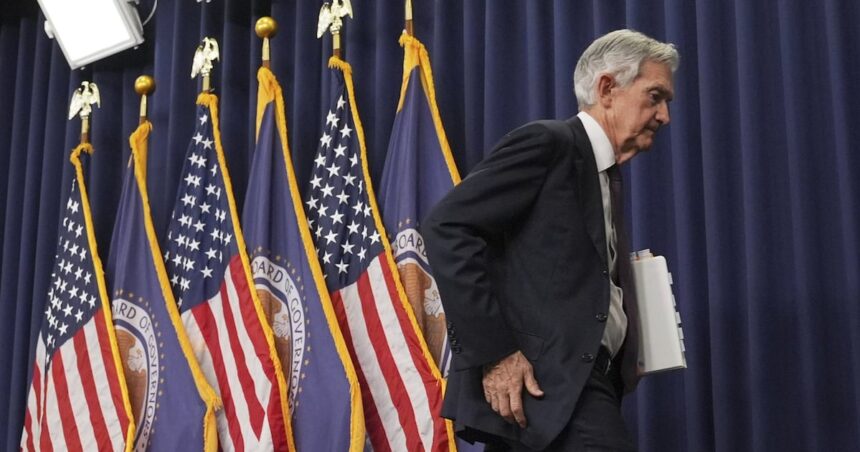The waiting game for lower interest rates stretches on. After the Federal Reserve’s latest meeting, Americans hoping for relief from high borrowing costs face more patience-testing months ahead, with policymakers signaling they need more convincing evidence that inflation is truly tamed.
Wednesday’s announcement from Fed Chair Jerome Powell maintained the federal funds rate at its current 5.25-5.50% range—where it’s been since July 2023—while acknowledging the economic crosscurrents making their decision particularly challenging.
“We’re seeing the economy move in the right direction, but we’re not yet confident enough in the inflation trajectory to begin our easing cycle,” Powell noted during his press conference. “The risks have become more balanced, but premature rate cuts could reignite price pressures we’ve worked so hard to control.”
This cautious stance comes amid a resilient labor market that’s showing signs of cooling without crashing. May’s employment report showed 180,000 jobs added—healthy but not overheating—while unemployment ticked up slightly to 4.1%. Meanwhile, inflation has proven stubborn, with core PCE inflation (the Fed’s preferred gauge) running at 2.7% annually, still above the central bank’s 2% target.
For Canadian investors and businesses with U.S. exposure, this prolonged high-rate environment has significant implications. The Bank of Canada‘s recent modest rate cut puts it slightly ahead of its American counterpart in the easing cycle, potentially widening interest rate differentials between the two economies.
Market reactions reflected adjusted expectations. Treasury yields edged higher following the announcement, while stocks initially dipped before recovering as traders digested Powell’s remarks. The odds of a September rate cut, according to CME’s FedWatch Tool, now stand at about 65%, down from nearly 80% a month ago.
Financial analysts remain divided on the timing of eventual cuts. “The Fed is operating in a narrowing corridor between inflation risks and growth concerns,” explains Sophia Rodriguez, chief economist at Northern Capital Group. “Their patience approach makes sense given how inflation surprised to the upside last year after they thought it was contained.”
For everyday Americans, the practical impact remains tangible. Mortgage rates hovering near 7% continue to sideline potential homebuyers, while credit card interest averages 20.68%—the highest in decades. Auto loans and small business financing remain similarly expensive, creating a drag on consumption and investment.
Manufacturing sectors have felt particular pressure. The ISM Manufacturing Index has remained in contractionary territory for 18 of the last 20 months, though May’s reading showed slight improvement. Meanwhile, the services sector, which comprises roughly 70% of the U.S. economy, continues to expand modestly.
The Fed’s economic projections, updated quarterly in their “dot plot,” now suggest only one or possibly two quarter-point cuts this year, down from the three or four projected in December. Board members also revised their inflation forecasts upward slightly, suggesting they expect price pressures to remain somewhat elevated through year-end.
What’s particularly striking about this economic cycle is how well consumer spending has held up despite restrictive monetary policy. Retail sales data shows Americans continuing to spend, though increasingly through credit channels, raising questions about household financial sustainability.
“We’re seeing consumers starting to reach their limits,” notes Rashad Williams, retail sector analyst at Meridian Research. “Credit card delinquencies are rising, especially among younger consumers and those with lower credit scores. There’s only so long households can withstand these elevated rates.”
Housing market participants expressed particular frustration. “Another delay in cutting rates means another quarter where potential first-time homebuyers remain priced out,” said Jennifer Ortiz, president of the National Housing Association. “We’re creating a generation of permanent renters if this continues much longer.”
The Fed’s dual mandate—maximum employment and price stability—appears to be tilting in favor of the inflation fight, despite growing concerns about economic momentum. First-quarter GDP growth slowed to 1.3%, below the long-term trend, with forecasts for the second quarter slightly more optimistic but still modest.
Business investment plans remain cautious, with many companies citing interest rate uncertainty as a factor in delaying expansion. The National Federation of Independent Business survey shows small business optimism hovering below its historical average, though hiring plans remain surprisingly resilient.
Looking ahead, Powell emphasized data dependence rather than committing to any preset course. “We’ll be watching incoming information closely, particularly inflation readings and labor market conditions,” he stated. “When the time is right to begin reducing rates, we’ll do so methodically.”
International considerations also factor into the Fed’s calculations. The European Central Bank recently cut its main rate for the first time since 2019, while Japan has begun raising rates from ultra-low levels. These divergent policy paths create complex currency and capital flow dynamics that could influence U.S. economic conditions.
For investors, the prolonged high-rate environment continues to favor value stocks over growth names, while keeping pressure on rate-sensitive sectors like real estate and utilities. Bond investors face reinvestment decisions as they weigh locking in current yields against potential rate cuts later this year.
As summer begins, the economic data calendar becomes particularly important for rate-cut timing. June’s inflation report, due in mid-July, will be scrutinized for signs of sustained moderation, while the next two employment reports will show whether labor market cooling is accelerating or stabilizing.
The waiting game continues—and for millions of Americans feeling the pinch from expensive mortgages, auto loans, and credit card debt, patience is wearing thin. Yet the Fed appears determined to ensure inflation is thoroughly defeated before pivoting, even if it means extending economic pain a few months longer.






